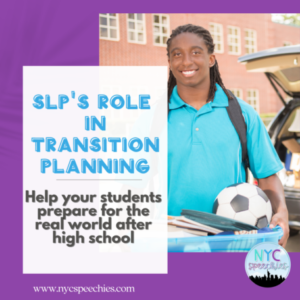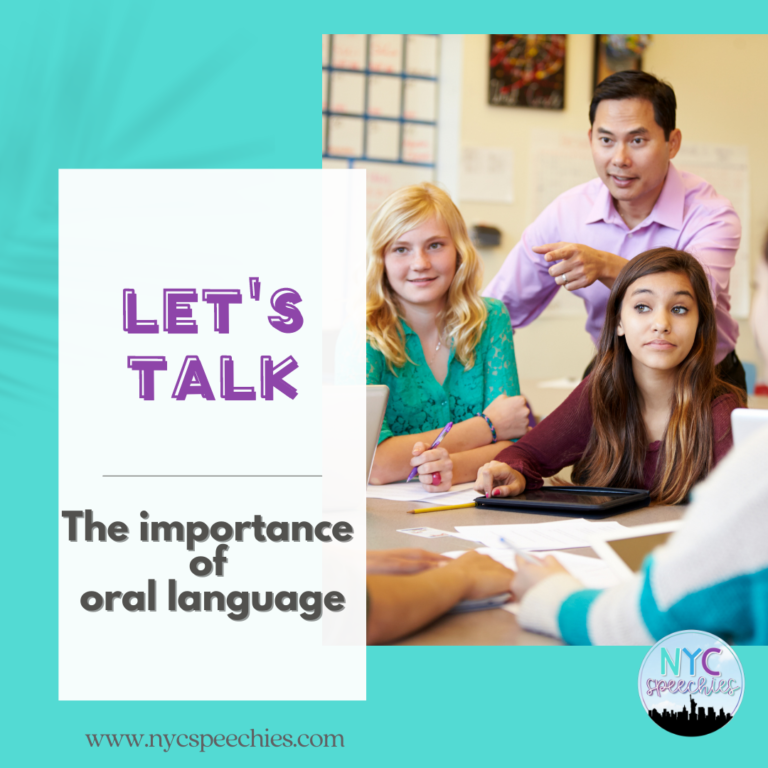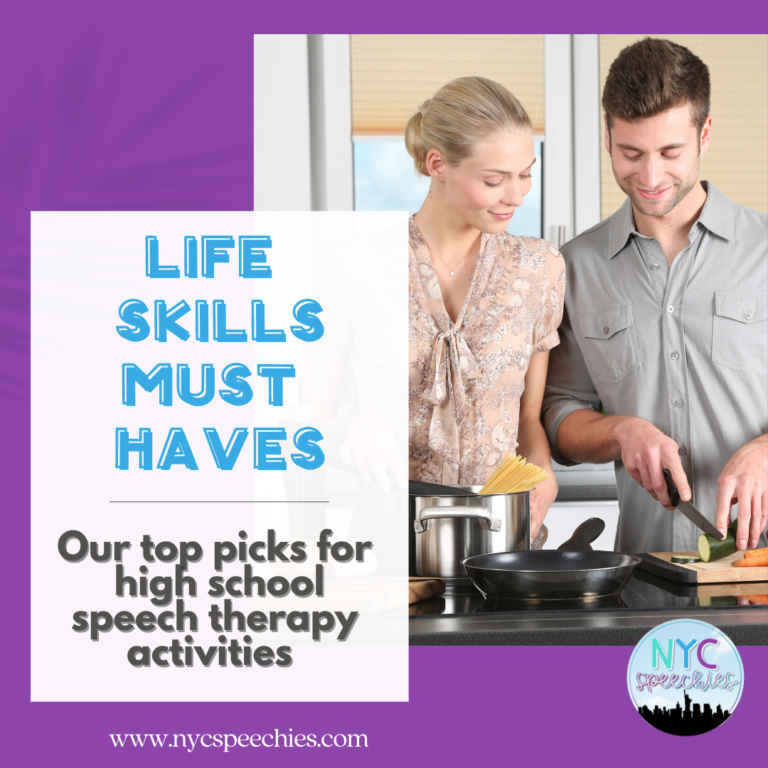SLP’S Role in Transition Planning
 Right from the start of school in September, our students (specifically seniors) are already looking forward to graduating. They can’t wait to get out of high school. Unfortunately, they don’t realize that graduating high school means becoming a productive, independent member of society. How are they going to remember their work schedule or when to go to their college classes throughout the week when so many of them can’t even remember when they have a speech session without a reminder!?! Our students at the high school level will certainly need a lot of support as they transition to their post-high school lives.
Right from the start of school in September, our students (specifically seniors) are already looking forward to graduating. They can’t wait to get out of high school. Unfortunately, they don’t realize that graduating high school means becoming a productive, independent member of society. How are they going to remember their work schedule or when to go to their college classes throughout the week when so many of them can’t even remember when they have a speech session without a reminder!?! Our students at the high school level will certainly need a lot of support as they transition to their post-high school lives.
How can we as speech-language pathologists help our students prepare for the real world post-high school?
As SLPs in high school, it’s always important to consider how we can target our goals while also providing opportunities to prepare our students for life after high school. Transition planning is a “collaborative process that is based on the students strengths, preferences, and interests, and focuses attention on how the student’s educational program can be planned to help the student make a successful transition to his or her goals for life after high school” (NYSED). Transition planning begins when the student enters high school and is focused on creating a smooth transition to a post-high school setting. Support in transition planning can include support within the following areas:
- Employment
- Transportation
- Independence
- Recreation and Leisure
- Educational and Vocational Training
- Community Living
- Self-Advocacy
When you look at all that is included in transition planning, the options for incorporating these elements into your high school speech and language groups are really endless! Providing your students with rich opportunities to explore these different areas in your speech and language sessions will prove invaluable to your students.
Here are some ideas for incorporating transition skills into your speech and language sessions:
EMPLOYMENT
Focus on job skills needed for employment. This can include job exploration on free websites such as https://www.careerexplorer.com/. Help your students use job websites such as Indeed and choose a potential job. Then help them write a resume or cover letter and follow the steps to apply. If they land an interview, generate potential questions and answers and then engage in a mock interview. Work on their email writing skills by helping them follow up by writing an email.
 TRANSPORTATION
TRANSPORTATION
Print out public transportation maps and time schedules. There are so many goals you can target with these skills! Create wh- questions based on maps and schedules. Help your students follow directions to a job. Target executive function skills like time management, planning, and organization – when do they need to leave in order to be on time? What buses or trains do they need to take? How much will transportation cost? What do they need to bring with them in? Create opportunities for your students to learn about and utilize Google Maps to support their knowledge about transportation.
INDEPENDENCE
Help students foster independence by teaching them about skills needed to live independently. Teach them about paychecks, banking, and money management. Help them learn critical cooking skills, hygiene skills, and cleaning skills (mom won’t be cleaning their houses forever!). Teach them to utilize a planner or calendar so they can organize their work or school schedule on their own. Help your students learn about different ways to do laundry. Generate to-do lists and help your students identify which items are more important.
RECREATION/LEISURE
How will your students pass their time? (And no, we are not just talking about TikTok and video games!) What fitness centers are close by and how much do they charge? Perhaps your students are interested in joining a kickball league or a chess club. Help your students navigate their city or town’s websites for recreational activities they are partake in.
EDUCATION AND VOCATIONAL TRAINING
Have your students read about different vocational programs they would want to apply to and help them complete applications and/or essays needed. Do your students want to apply to a trade school? Help them research and choose a school and follow the steps needed to apply. Create a webquest to help your students navigate websites of different programs they are interested in. 
COMMUNITY LIVING
Teach your students about critical life skills such as banking, kitchen and cooking skills, hygiene, and online safety – all necessary for community living. Engage in activities related to vocabulary, reading about different topics, writing, webquests, and life skills based problem solving to enhance your students’ understanding of these skills.
SELF-ADVOCACY
Work on self-advocacy skills such as asking for help, problem solving, and speaking up in various social situations they may encounter in different jobs. Create problem solving scenarios for different places in the community such as the bank, dry cleaners, and doctor’s offices.
Hopefully you’ve discovered some new ideas that you can implement with your students that will be transitioning to post-high school lives. If you’re looking for more transition ideas, check out our “transition” category on our TPT store. We’ve got tons of activities related to life skills, career readiness, and college readiness!
What activities do you do to support the transition planning process with your students?






